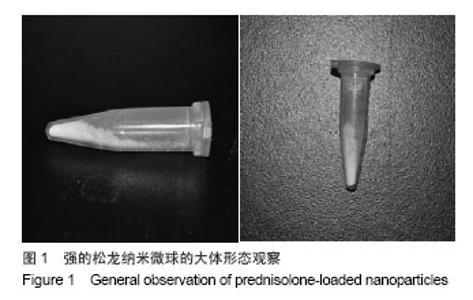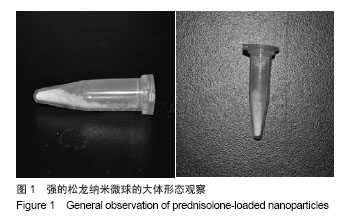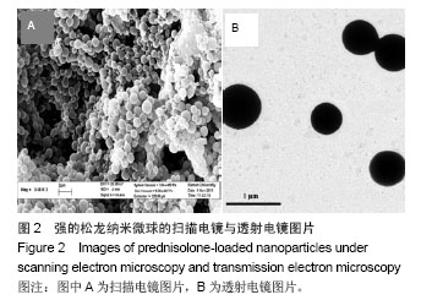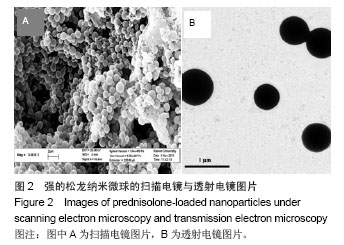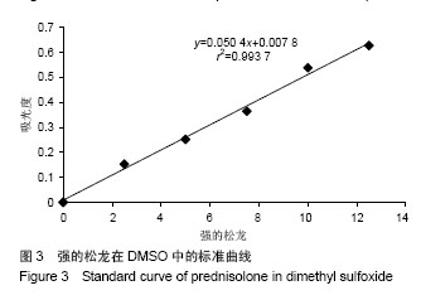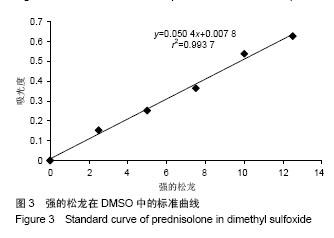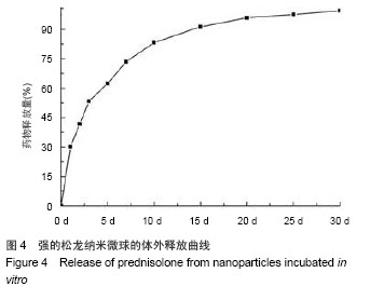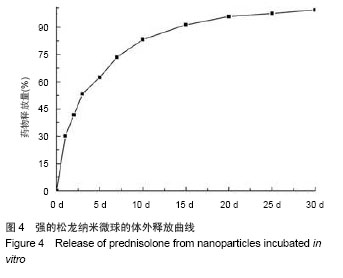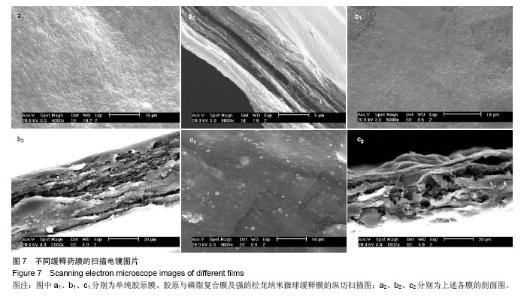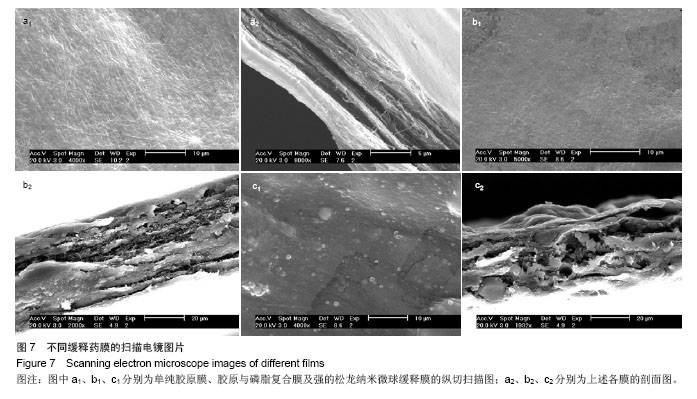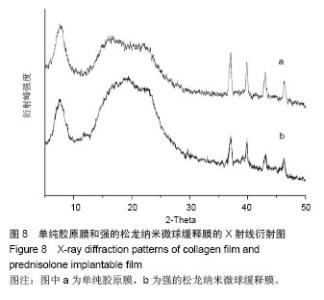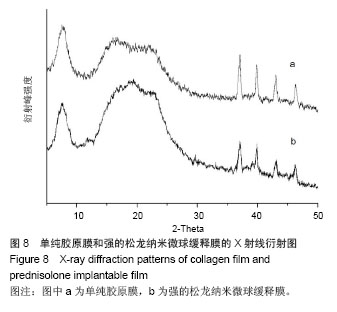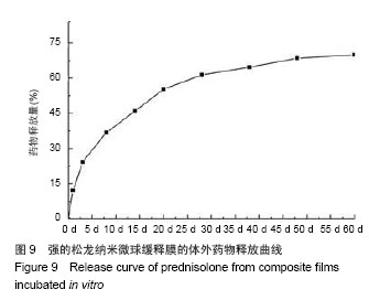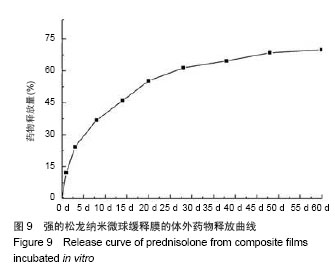Chinese Journal of Tissue Engineering Research ›› 2014, Vol. 18 ›› Issue (39): 6342-6347.doi: 10.3969/j.issn.2095-4344.2014.39.019
Previous Articles Next Articles
Preparation and sustained-release property of prednisolone implantable films
Li Qiang, Lin Yan-yu, Qi Peng, Shen Jia-zuo, Li Lin, Lian Ke-jian
- Dongnan Hospital of Xiamen University (the 175 Hospital of PLA), Zhangzhou 363000, Fujian Province, China
-
Online:2014-09-17Published:2014-09-17 -
Contact:Lian Ke-jian, Chief physician, Dongnan Hospital of Xiamen University (the 175 Hospital of PLA), Zhangzhou 363000, Fujian Province, China -
About author:Li Qiang, Master, Physician, Dongnan Hospital of Xiamen University (the 175 Hospital of PLA), Zhangzhou 363000, Fujian Province, China -
Supported by:the Scientific Foundation of Zhangzhou City, No. Z2010086
CLC Number:
Cite this article
Li Qiang, Lin Yan-yu, Qi Peng, Shen Jia-zuo, Li Lin, Lian Ke-jian. Preparation and sustained-release property of prednisolone implantable films[J]. Chinese Journal of Tissue Engineering Research, 2014, 18(39): 6342-6347.
share this article
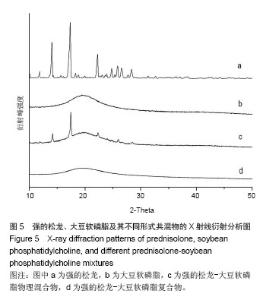
2.2 强的松龙在磷脂复合物中的存在状态 图5为X射线衍射分析分析结果,图中a曲线显示,强的松龙药物主要以晶体形式存在,在10°< 2θ < 25°衍射范围内出现多处强结晶衍射峰;b曲线可见大豆软磷脂无明显结晶衍射峰出现,仅为一条光滑的曲线;c曲线可见强的松龙与大豆软磷脂物理混合后,强的松龙的结晶衍射峰仍然存在,且无新的结晶衍射峰生成,但是强的松龙的各衍射峰值均出现了不同程度的降低,表明大豆软磷脂的加入减弱了强的松龙的晶体存在状态;d曲线可见,强的松龙磷脂复合物中,强的松龙的晶体衍射峰完全消失,只展现出了一条光滑的曲线,与大豆软磷脂的衍射曲线相类似,显示了强的松龙磷脂复合物中强的松龙的存在状态是与大豆软磷脂相结合,而不是以自己本身的晶体状态存在。"
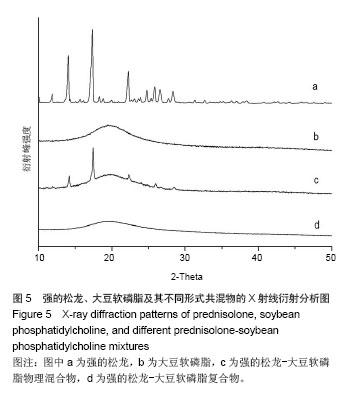

2.3 强的松龙纳米微球缓释膜的形态学考察 图6为制得的纳米微球缓释膜的照片,图中可见制得的缓释膜光滑平整,厚度均一,具有较好的柔韧性及吸水性能。图7为强的松龙缓释药膜不同阶段的扫描电镜图片,其中a1、b1、c1分别为单纯胶原膜、胶原与磷脂复合膜及强的松龙纳米微球缓释膜的纵切扫描图;a2、b2、c2分别为上述各膜的剖面图。从图a1、a2中可见,单纯胶原膜表面致密,有大量交错的纤维结构组成,剖面图可见胶原膜内部由层状组织组成,层状组织间有空隙;图b1、b2所示为胶原与磷脂的复合膜,图中可见与单纯胶原膜相比磷脂复合膜的表面纤维样组织不明显,质地更加光滑致密,剖面图可见胶原膜层与层之间的空隙被磷脂组织填充,更加光滑致密,使胶原膜的生物学特性更佳,有利于药物的持续缓慢释放。图c1、c2为强的松龙纳米微球缓释膜,图中可见少量的纳米微球附着于缓释膜的表面,这与该药膜体外释放试验中少量的药物突释现象有关,剖面图可见胶原与磷脂复合膜的结构未见明显改变,纳米微球均匀分布于复合膜中,周围由磷脂组织填充;由图中可看出,强的松龙药物首先从药膜表面附着的纳米微球中释放,后随着胶原磷脂复合膜的降解,复合膜内部的纳米微球逐渐降解,将药物从膜中释放出来;复合药膜的致密结构有利于纳米微球的持续缓慢释放。"

| [1]Silver J,Miller JH.Regenerat ion beyond the glial scar. Nat Rev Neurosci.2004;5(2):146-156. [2]Fenrich K,Gordon T.Canadian Associat ion of Neuroscience review: axonal regener at ion in the peripheral and central nervous systems--current issues and advances.Can J Neurol Sci.2004;31(2):142-156. [3]党育,姜保国,张殿英,等.甲基泼尼松龙局部应用对周围神经损伤修复后的形态学研究[J].中华手外科杂志,2005,21(5):314-316. [4]王晓波.药物运释系统[M].北京:中国医药科技出版社,2007. [5]Cui F,Shi K,Zhang L,et al.Biodegradable nanoparticles loaded with insulin-phospholipid complex for oral delivery: preparation, in vitro characterization and in vivo evaluation. JControlled Release.2006;114(2):242-250. [6]Ozgenel GY. Effects of hyaluronic acid on peripheral nerve scarring and regenerat ion in rats. Microsurgery. 2003;23(6): 575-581. [7]Yates JM,Smith KG,Robinson PP.The effect of triamcinolone hexacetonide on the spontaneous and mechanically-induced ectopicdischarge following lingual nerve injury in the ferret. Pain.2004;111:261-269. [8]Azuma C,Tohyama H,Nakamura H,et al.Antibody neutralization of TGF-beta enhances the deterioration of collagen fascicles in a tissue-cultured tendon matrix with ex vivo fibroblast infiltration.J Biomech.2007;40(10):2184-2190. [9]赵永青,苏衍萍,韩凤岳.甲基强的松龙对急性脊髓损伤神经元保护作用的实验研究[J]. 中华神经外科杂志,2005,21(6):367-370. [10]He YC,Chen JW,Cao J,et al.Toxicities and therapeutic effect of 5-fluorouracil controlled release implant on tumor-bearing rats.World J Gastroenterol.2003;9(8):1795-1798. [11]Li YW,Duc LH,Tyler B,et al.In vivo delivery of BCNU from a MEMS device to a tumor model.J Controlled Release. 2005; 106(1-2):138-145. [12]Wang FJ,Wang CH.Etanidazole-loaded microspheres fabricated by spray-drying different poly(lactide/glycolide) polymers: effects on microsphere properties. J Biomater Sci Polym Ed.2003;14(2):157-183. [13]Chang MC,Ko CC,Douglas WH.Preparation of hydroxyapatite-gelatin nanocomposite. Biomaterials. 2003;24(17):2853-2862. [14]Liu H,Mao J,Yao K,et al.A study on a chitosan-gelatin- hyaluronic acid scaffold as artificial skin in vitro and its tissue engineering applications. J Biomater Sci Polym Ed. 2004;15: 25-40. [15]Harada O.Collagen-based new biomedical films: synthesis, property and cell adhesion.J Appl Polym Sci. 2001;81: 2433-2438. [16]Ann LD,Jeffrey LC,Eileen MD,et al.Pharmacological modulation of the tissue response to implanted poly lactic-co-glycolic acid microspheres. Eur J Pharm Biopharm. 1997;1637(44):89-102. |
| [1] | Zhang Tongtong, Wang Zhonghua, Wen Jie, Song Yuxin, Liu Lin. Application of three-dimensional printing model in surgical resection and reconstruction of cervical tumor [J]. Chinese Journal of Tissue Engineering Research, 2021, 25(9): 1335-1339. |
| [2] | Zeng Yanhua, Hao Yanlei. In vitro culture and purification of Schwann cells: a systematic review [J]. Chinese Journal of Tissue Engineering Research, 2021, 25(7): 1135-1141. |
| [3] | Xu Dongzi, Zhang Ting, Ouyang Zhaolian. The global competitive situation of cardiac tissue engineering based on patent analysis [J]. Chinese Journal of Tissue Engineering Research, 2021, 25(5): 807-812. |
| [4] | Wu Zijian, Hu Zhaoduan, Xie Youqiong, Wang Feng, Li Jia, Li Bocun, Cai Guowei, Peng Rui. Three-dimensional printing technology and bone tissue engineering research: literature metrology and visual analysis of research hotspots [J]. Chinese Journal of Tissue Engineering Research, 2021, 25(4): 564-569. |
| [5] | Chang Wenliao, Zhao Jie, Sun Xiaoliang, Wang Kun, Wu Guofeng, Zhou Jian, Li Shuxiang, Sun Han. Material selection, theoretical design and biomimetic function of artificial periosteum [J]. Chinese Journal of Tissue Engineering Research, 2021, 25(4): 600-606. |
| [6] | Liu Fei, Cui Yutao, Liu He. Advantages and problems of local antibiotic delivery system in the treatment of osteomyelitis [J]. Chinese Journal of Tissue Engineering Research, 2021, 25(4): 614-620. |
| [7] | Li Xiaozhuang, Duan Hao, Wang Weizhou, Tang Zhihong, Wang Yanghao, He Fei. Application of bone tissue engineering materials in the treatment of bone defect diseases in vivo [J]. Chinese Journal of Tissue Engineering Research, 2021, 25(4): 626-631. |
| [8] | Zhang Zhenkun, Li Zhe, Li Ya, Wang Yingying, Wang Yaping, Zhou Xinkui, Ma Shanshan, Guan Fangxia. Application of alginate based hydrogels/dressings in wound healing: sustained, dynamic and sequential release [J]. Chinese Journal of Tissue Engineering Research, 2021, 25(4): 638-643. |
| [9] | Chen Jiana, Qiu Yanling, Nie Minhai, Liu Xuqian. Tissue engineering scaffolds in repairing oral and maxillofacial soft tissue defects [J]. Chinese Journal of Tissue Engineering Research, 2021, 25(4): 644-650. |
| [10] | Xing Hao, Zhang Yonghong, Wang Dong. Advantages and disadvantages of repairing large-segment bone defect [J]. Chinese Journal of Tissue Engineering Research, 2021, 25(3): 426-430. |
| [11] | Chen Siqi, Xian Debin, Xu Rongsheng, Qin Zhongjie, Zhang Lei, Xia Delin. Effects of bone marrow mesenchymal stem cells and human umbilical vein endothelial cells combined with hydroxyapatite-tricalcium phosphate scaffolds on early angiogenesis in skull defect repair in rats [J]. Chinese Journal of Tissue Engineering Research, 2021, 25(22): 3458-3465. |
| [12] | Wang Hao, Chen Mingxue, Li Junkang, Luo Xujiang, Peng Liqing, Li Huo, Huang Bo, Tian Guangzhao, Liu Shuyun, Sui Xiang, Huang Jingxiang, Guo Quanyi, Lu Xiaobo. Decellularized porcine skin matrix for tissue-engineered meniscus scaffold [J]. Chinese Journal of Tissue Engineering Research, 2021, 25(22): 3473-3478. |
| [13] | Mo Jianling, He Shaoru, Feng Bowen, Jian Minqiao, Zhang Xiaohui, Liu Caisheng, Liang Yijing, Liu Yumei, Chen Liang, Zhou Haiyu, Liu Yanhui. Forming prevascularized cell sheets and the expression of angiogenesis-related factors [J]. Chinese Journal of Tissue Engineering Research, 2021, 25(22): 3479-3486. |
| [14] | Liu Chang, Li Datong, Liu Yuan, Kong Lingbo, Guo Rui, Yang Lixue, Hao Dingjun, He Baorong. Poor efficacy after vertebral augmentation surgery of acute symptomatic thoracolumbar osteoporotic compression fracture: relationship with bone cement, bone mineral density, and adjacent fractures [J]. Chinese Journal of Tissue Engineering Research, 2021, 25(22): 3510-3516. |
| [15] | Liu Liyong, Zhou Lei. Research and development status and development trend of hydrogel in tissue engineering based on patent information [J]. Chinese Journal of Tissue Engineering Research, 2021, 25(22): 3527-3533. |
| Viewed | ||||||
|
Full text |
|
|||||
|
Abstract |
|
|||||
